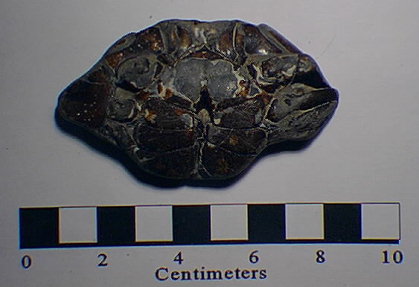
Blue crab (ventral view) preserved in concretion matrix.
This web page is a short collection of images of fossils collected from Rockaway Beach (Queens, NY), Staten Island, and Sandy Hook (NJ). The conclusion that some of these items are actually of antiquity is purely subjective.
These processes that cement modern shell material are essentially the same processes that helped to preserve shells and organic remains as fossils in the geologic past. Several additional important geologic processes related to fossils should also be noted. First, vertebrate bones and teeth consist of porous apatite (a calcium phospate mineral). When exposed to seawater minerals precipitate within pores and ion substitution replaces some of the spaces within the aragonite mineral lattice. The net result is that bone material tends to become darker in color, harder, and more brittle with time (if it isn't eaten or dissolved in organic acids in the sediment first!).
Another important process is the formation of concretions. Concretions are nodules that commonly form around dead organisms or shell material. They form as layers of minerals (usually calcite, siderite, hematite, or phosphorite) accumulate around an organism buried in shallow sediment. Concretions can preserve delicate features, including structures that do not consist of shell or bone, such as crab carapaces. Many different geochemical processes can lead to the formation of concretions. One way this happens is as an organism slowly decays it releases ammonia which reacts with sea water in the sediment to precipitate minerals.
Most fossils illustrated below are probably Holocene or Pleistocene in age (several thousand to about two million years old). Definitively older ages are noted where possible. The companion Modern Sea Shore Creatures of the New York Bight web page provides many images of invertebrates that have fossil relatives or close analogs. Where possible this is noted in the caption text.

Blue crab (ventral view) preserved in concretion matrix.
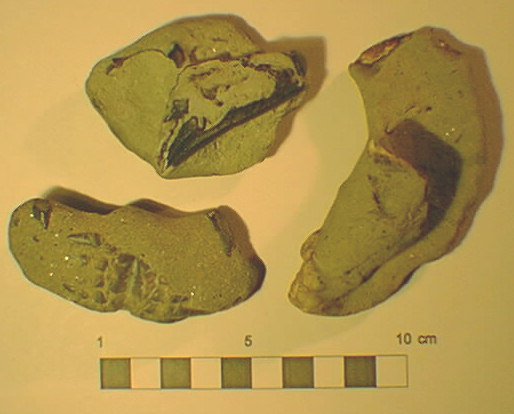
Various crabs and parts (all ancestors of modern blue crabs).
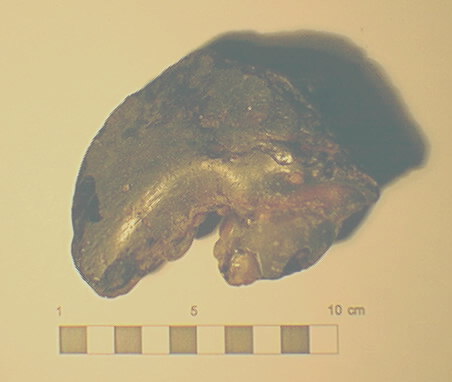
The giant claw of an American Lobster. This one probably would
have tipped the scales at around 8 pounds when alive!
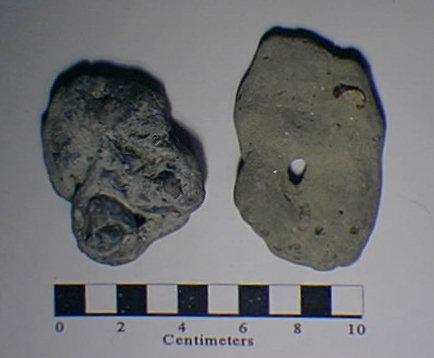
Concretion material bearing barnacles (Balanus sp.) and
gastropod fragments.
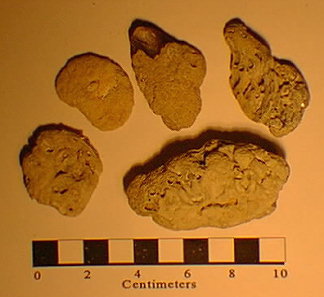
Calcareous sponges (These specimens are call "crumb of bread
sponges." The are found living on hard bottom surfaces and on
shipwrecks. Both recent and ancient examples can be found on area
beaches; fossil examples tend to be dark and densely cemented).
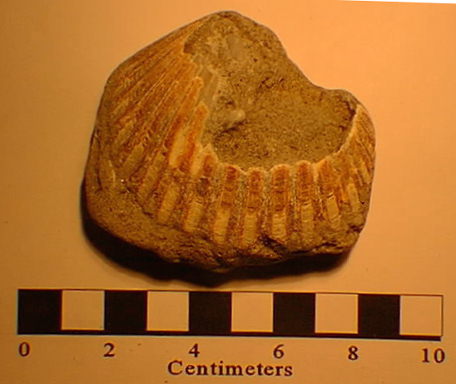
Fossil bay scallop.
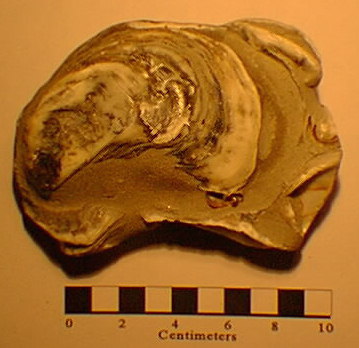
Fossil oysters in concretion matrix.
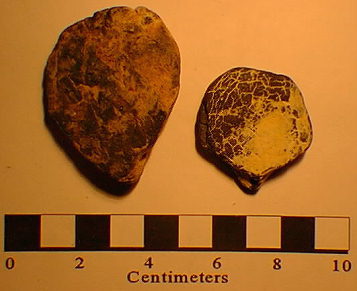
Cast of shells preserved in coal-like shale.
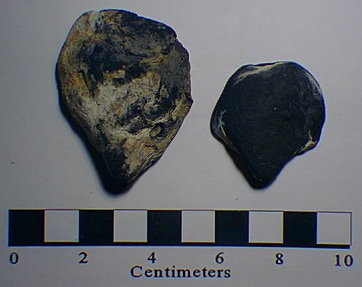
Cast of shells preserved in coal-like shale (reverse side).
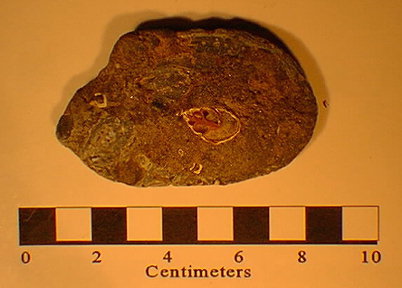
Gastropod (in cross-section) encased in beachrock matrix.
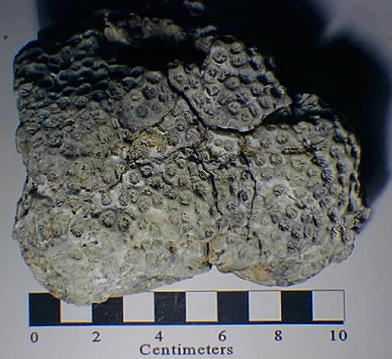
Coral encrusting a concretion (possibly modern a modern specimen;
fossil coral tends to be denser and capable of retaining a
polished surface). Before this century fishermen reported that
"coral reefs" existed in the NY Bight. One such reef, the
Shrewsbury Reef, offshore form Seabright, NJ was one such reef
where an abundance of encrusting coral on submerged rocky
outcrops probably had a similar appearance to more tropical
reefs.
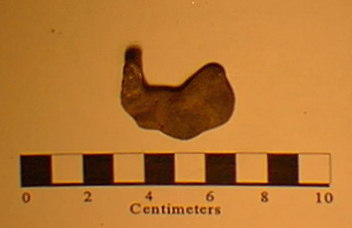
Earbone of an swimming mammal, probably a small whale.
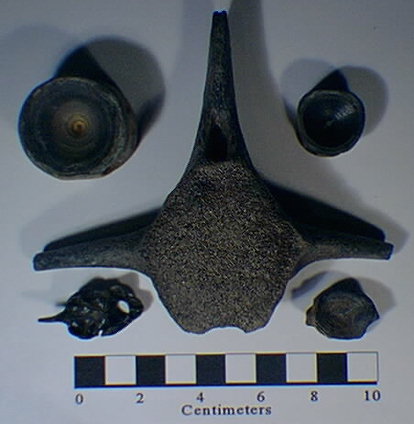
Large fish and mammal vertebrae. Modern bone can turn black
fairly quickly. Material displaying butcher marks are common and
are probably from offshore dumpsites (originally discarded as
cellar ash. Some display scratching typical of
primative tool cutting. These may have been derived from indian
settlements that are now offshore.
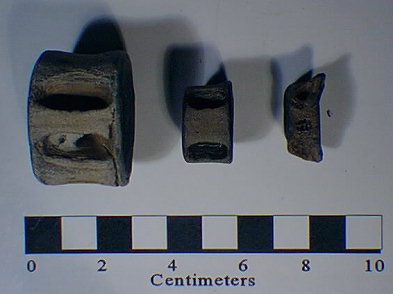
Shark vertebrae (showing side views of three of the vertebrae
above).

Teeth from land vertebrates (possum, deer, and horse), probably
recent.
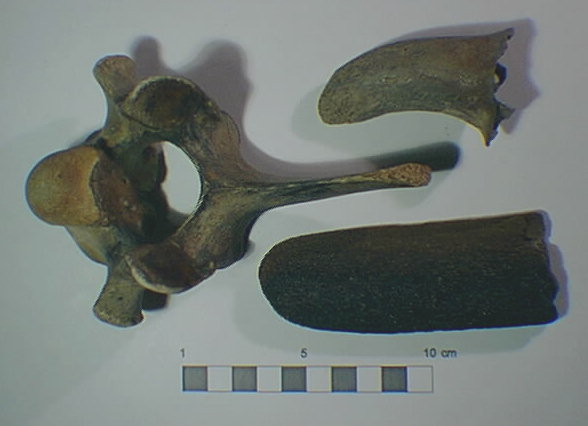
Sea mammal bone: a sea lion claw and vertebrae, a rib bone from a
small whale... Although scarce, these creature do visit the NY
harbor area on occasion.
For more information about NY Bight area fossils look at the Bibliography.
 Return to the
New York Bight Home Page
Return to the
New York Bight Home Page
Phil Stoffer and Paula
Messina
CUNY, Earth & Environmental Science, Ph.D. Program
Hunter College, Department of Geography
Brooklyn College, Department of Geology
In cooperation with
Gateway National Recreational Area
U.S. National Park Service
Copyright May, 1996
(All rights reserved; use as an educational resource
encouraged.)>